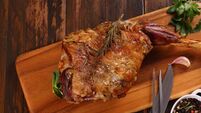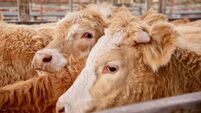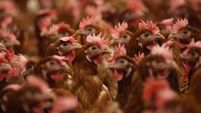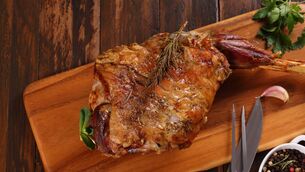Brian Reidy: Beef performance targets this winter after some good grazing
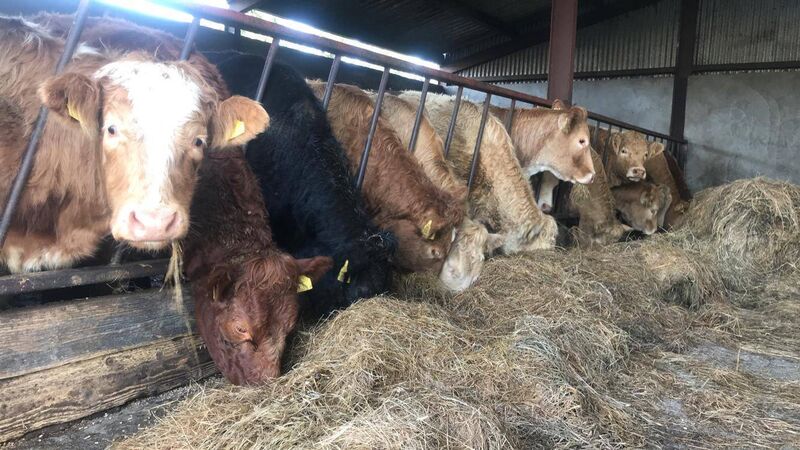
For beef producers, concentrate costs are generally good value as we head into the winter.
October has proved to be a fantastic month for grazing, with ground conditions excellent for this time of year. Plenty of grass remains on many farms and utilisation has been excellent, thankfully.
At home, I have a good bit of grass ahead of both cows rearing calves and dry cows. Conditions have allowed me to strip-graze dry cows to help restrict energy pre-calving. Cows rearing calves will be housed at the start of November, regardless of available grass, as I want to get them settled indoors before breeding begins about the 14 of the month.
Temperatures up until the start of this week were very pleasant, and cattle in sheds around the country had been sweating, and there had unfortunately been plenty of pneumonia reported around the country.
When going indoors, try not to house cattle too tight in sheds and leave doors open where possible and avoid housing wet stock
Thankfully for beef producers, concentrate costs are generally good value as we head into the winter. Some blends, however, do not reflect the current price of straights, so ask for the spec before buying. Top-quality native cereal blends represent excellent value.
As usual, grass silage quality is variable and obviously knowing the quality you have available to feed is essential in order to achieve cost-effective performance targets.
Animals are standing finishers a lot of money this year and need to be performing every day and with optimum health status. You must aim for cost-effective diets, without compromising on performance and it is so important to appreciate the value of the extra performance that can be gained by balancing your silage with a good quality balanced concentrate.
Firstly, you should set realistic targets for each group of cattle. Don’t accept under performance just because it would be cheaper. It is much more cost-effective and feed-efficient to put weight on younger animals than it is on more mature animals. This will have them leave the farm faster and significantly dilute fixed costs.
Most beef breeds should have targets set for weanlings at around 0.8kg-1kg per day. This will obviously depend on sex, with bulls doing slightly better and heifers doing less. A good quality protein source and a digestible fibre should be included in any growing blend to promote efficient frame growth.
It is vital to have a period of frame growth to avoid low weights and over-fat carcasses. The period between seven months and 18 months is when the animal is capable of the most frame growth. A better grown animal during the winter will have a much bigger capacity to achieve cheap gain from grass in the following spring and summer.
Target gains set for finishers should be based on your target market for grade, carcass weight and age. Continental bulls in their finishing period have the potential to gain 2kg plus per day. For most steers and heifers, an average of 1Kg-1.3Kg per day over the entire finishing period is achievable. Continental steers will be capable of higher gains, once the energy density of the diet being fed is high enough to support this performance.
All feeds need careful balancing to achieve desired performance. Under feeding of protein is not a good strategy as it can depress appetites. Bear in mind that most silages I have tested this autumn are between 11% and 13% protein with some significantly lower.
- Protein encourages intake which improves animal performance;
- Poor intakes will result in underperformance;
- Rumen bugs require sufficient protein to efficiently digest nutrients;
- Protein is a major nutrient in promoting frame growth;
- Naturally muscled animals on a finishing diet will not flesh properly if they are deficient in protein;
- Continental stock will require more protein than dairy bred stock during the finishing period.
Traditionally, common practice has been to feed a beef nut/blend to growing weanlings. However, this is not always ideal. These mixes are generally in around 16% protein and at lower levels will rarely balance grass silage sufficiently for growing stock. In most cases, a 19% to 21% protein blend will be more suitable for growing stock.
It is important to use a protein which suits your system best. In particular, soya is excellent value this year. For young stock, it is important that the source of protein is a quality one which is utilisable by the animal.

